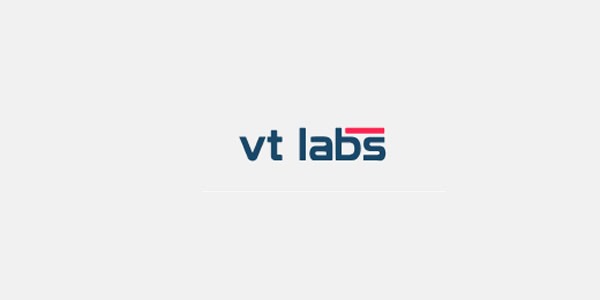In 2025, simply having a Shopify store won't guarantee market leadership.
In 2025, simply having a Shopify store won't guarantee market leadership. Ambitious businesses need a sophisticated"Shopify Tech Stack" – a strategic blend of Shopify's core, advanced apps, seamless integrations, and custom solutions. This engineered ecosystem effortlessly manages demands, enriches customer interactions, and automates workflows for unparalleled growth.
Building the optimal tech stack isn't just technical; it's a critical strategic imperative. Each component must integrate flawlessly, boost efficiency, and deliver quantifiable results. This guide, fromShopify web development company specialists, offers your blueprint for a high-performance, future-ready tech stack, positioning your store for enduring success and scalable expansion in 2025.
Deconstructing Your Shopify Digital Foundation
YourShopify tech stack encompasses every digital tool powering your online store. This includes:
- Your chosenShopify plan (e.g., Shopify, Advanced, Plus).
- Yourstorefront theme and custom code.
- Shopify applications (App Store or custom-built).
- Integrations with external software (CRM, ERP, marketing automation).
- Custom-developed functionalities.
A well-assembled tech stack is your e-commerce engine, directly impacting performance, marketing, customer satisfaction, and scalability.
Core Pillars for Maximizing E-commerce Velocity
As your business grows, these foundational elements are crucial for your tech stack:
1. The Shopify Core: Enabling Seamless Customer Journeys
Growing enterprises significantly benefit fromShopify Plus. It offers unparalleled checkout customization, higher API limits, dedicated support, and automation tools like Shopify Flow. Afast, mobile-optimized theme is non-negotiable for SEO and conversions. Considercustom theme development for unique branding or aHeadless Shopify architecture (Hydrogen/Oxygen) for ultimate performance and design freedom.
2. Specialized Applications: Amplifying Business Capabilities
Select apps that solve specific problems and integrate seamlessly:
- Customer Acquisition & Engagement: Email/SMS marketing (Klaviyo), social proof (Yotpo), loyalty programs (Smile.io), SEO tools, and precise ad integrations.
- Customer Service Excellence: Omnichannel helpdesks (Gorgias), live chat/chatbots (Tidio), and comprehensive FAQs.
- Operational Efficiency & Logistics: Shipping automation (ShipStation), inventory management (Skubana), returns management (Loop Returns), and sales tax compliance (Avalara AvaTax).
- Business Intelligence & Risk Management: Advanced analytics (Google Analytics 4), accounting integrations (QuickBooks), and fraud prevention (Signifyd).
- Personalization & Conversion Optimization: A/B testing (VWO), AI product recommendations, and advanced site search (Algolia).
3. Enterprise Integration: Unifying Your Digital Landscape
Seamlessly integrating Shopify with other core systems is vital for data consistency:
- Enterprise Resource Planning (ERP): Centralize all business data (e.g., NetSuite).
- Customer Relationship Management (CRM): Gain a unified 360-degree view of customer interactions (e.g., HubSpot).
- Product Information Management (PIM): Manage extensive product catalogs centrally (e.g., Salsify).
- Marketplace & Social Commerce Synchronization: Ensure real-time inventory/order sync for Amazon, eBay, or Instagram Shopping.
4. Data Intelligence: Powering Informed Decisions
- Google Analytics 4 (GA4) Expertise: Indispensable for understanding user behavior and marketing performance.
- Data Warehousing & Business Intelligence (BI): Use tools like Google BigQuery and Tableau to combine data and analyze it.
- Customer Data Platforms (CDP): For unified customer profiles and highly personalized experiences (e.g., Segment).
Strategic Imperatives for Crafting Your Optimal Stack
When assembling your Shopify tech stack, prioritize:
- Scalability & Future-Proofing: Can tools handle significant growth without issues?
- Integration Prowess: Do components communicate effectively via robust APIs?
- Performance Impact Analysis: Evaluate site speed; fast load times are critical.
- Budget Allocation & ROI: Analyze costs versus value.
- Balancing Usability & Customization: Find the right balance for your team.
- Vendor Ecosystem & Support: Look for reliable support and an active community.
- US Market Specificity & Compliance: Ensure popular US payment methods and data privacy compliance (CCPA/CPRA).
The Strategic Advantage of Custom Development
While the Shopify App Store offers a wide array of solutions, custom development provides a critical edge for businesses with unique needs. Whether you're looking to implement specialized features, enable complex integrations, enhance performance, or automate tailored workflows, custom solutions can unlock greater efficiency and innovation. Our experts can help you see when custom Shopify development solutions are best for your store.
Evolving Your Tech Stack: A Strategic, Ongoing Process
Your Shopify ecosystem isn't static—it should evolve in step with your business. Optimize it through a proactive, iterative approach:
Lean Launch & Scalable Growth: Start with core essentials, expanding thoughtfully as your needs evolve.
Strategic Audits: Regularly review your stack, retiring underperforming or redundant apps.
Ongoing Market Awareness: Keep pace with new features, emerging technologies, and shifting consumer expectations.
Expert Insights: Engage specialists for tailored solutions and strategic planning as your business scales.
Conclusion: Powering Your E-Commerce Growth in 2025
An optimized Shopify tech stack is essential for long-term success. By strategically selecting and integrating tools that boost performance, streamline operations, and enrich customer experiences, you create a resilient and scalable foundation. Stay agile, prioritize integration, and align your stack with your evolving business goals to achieve and sustain e-commerce leadership in 2025 and beyond.








